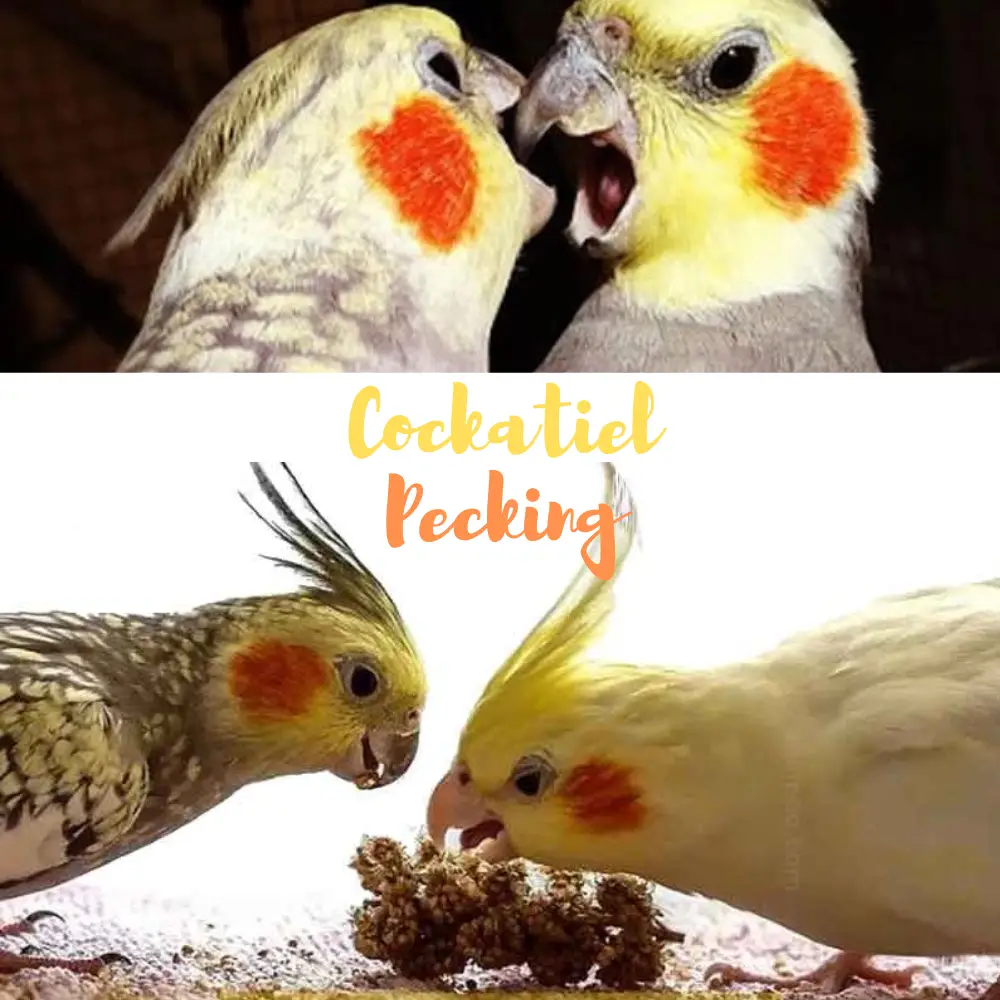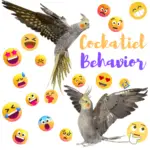
Pecking can, in most cases, result from a feeling of intense or repeated stress. The cockatiel then responds with inappropriate behavior: an abusive and excessive feather toilet.
However, this is not the only explanation for pecking. Let’s see together what factors can be the cause of this behavior.
Inappropriate behaviors
The environmental factor
First of all, it is most of the time the environmental factor that is pointed out when a case of pecking occurs.
By this term in the first place, we mean an environment that is not very enriching and stimulating for the animal, including a cage that offers no (or little) games, or foraging opportunities… It can also be simply a cage of too-small dimensions… These “environmental deprivations” induce in the animal a form of stress born of anxiety and boredom … leading in turn to neophobia (fear of what is new or unknown) and a lack of motivation in the exploration of new things, new places (Garner et al., 2006). Thus, the bird is caught in a kind of vicious circle from which it is difficult to get out.
A bird in the presence of smokers may also have a higher tendency to pecking (Bellangeon, 2001. Marchon, 2003).
Finally, it should be noted that diet seems to play a role in pecking: dietary deficiencies such as hypovitaminosis A could be a factor favoring this behavior.
However, the favor of pecking behavior does not stop in the vicinity close to the cockatiel. He also takes into account his breeding and his education by his parents. Indeed, the absence of parents during the weaning period (e.g. via the EAM breeding method – hand breeding) causes a gap in learning species-specific codes (Wedel, 1999).
Similarly, loneliness and the absence of a social congener (or death) is a recognized causes of pecking (Low, 2001). In the hand-raising bird, it is the absence of the human that can be a determining factor via the phenomenon of hyper-attachment. Conversely, unwanted exposure imposed on the bird with an animal (a dog, another bird, or even a human) has equally harmful effects, being a source of significant stress. Humans can – despite themselves – reinforce the pecking behavior by a bad reaction to the problem (“punish” or scold the animal, for example).
In addition, pecking can also be exercised on another individual. It can then be a dominant behavior on the part of one bird over another, more submissive. Pecking can also be experienced by a newly integrated cockatiel in the group, or even by babies from their own parents. In the latter case, it would be for the couple to hunt the nest from the nest to start hatching new eggs.
Dysfunctional behaviors
The neurobiological factor
In the event that the improvement of the bird’s environment does not change the pecking behavior in any way, it is sometimes suggested that the problem may be neurobiological. However, the idea of a brain dysfunction causing pecking has still been little studied. Some anxiolytic or anti-depressant treatments may have been administered to parrots (Johnson, 1987) with some success in the results obtained. Some researchers suggest a possible connection with schizophrenia or autism in certain specific cases of behavioral disorders including pecking (Frith & Done, 1983; Turner, 1997).
The genetic factor
Garner et al. in 2006 estimated the heritability of pecking to be 1.14 ± 0.27. A genetic factor does exist according to him, but the study was only carried out on a small herd of birds. The deepening of this research is therefore still necessary before being able to confirm or refute the genetic hypothesis of pecking.
The medical factor
Finally, the last factor that can be studied in front of a bird pecking is the medical factor. Skin irritations, allergies, presence of parasites (endo or exo-parasites), obesity, systemic disease, liver or kidney disease, Beak and feather disease, hypothyroidism, heavy metal poisoning, and giardiasis… are a non-exhaustive list of effects known to cause pecking. In some cases, it can be an iatrogenic effect: thus the pecking is not part of the disease but of the treatment carried out, or even the stress caused by taking the treatment in the bird.
Anti-pecking treatments?
There are treatments or alternative solutions to try to stop or limit the pecking of cockatiels.
Note in particular the application of clay on the injured areas, No-Pick or Lactacal, but also the use of Nivéa cream
Our pet cockatiels preening and pecking each other
https://www.youtube.com/watch?v=bvBn3aKm3KU
SOURCE:Kenneth Burchfiel




















